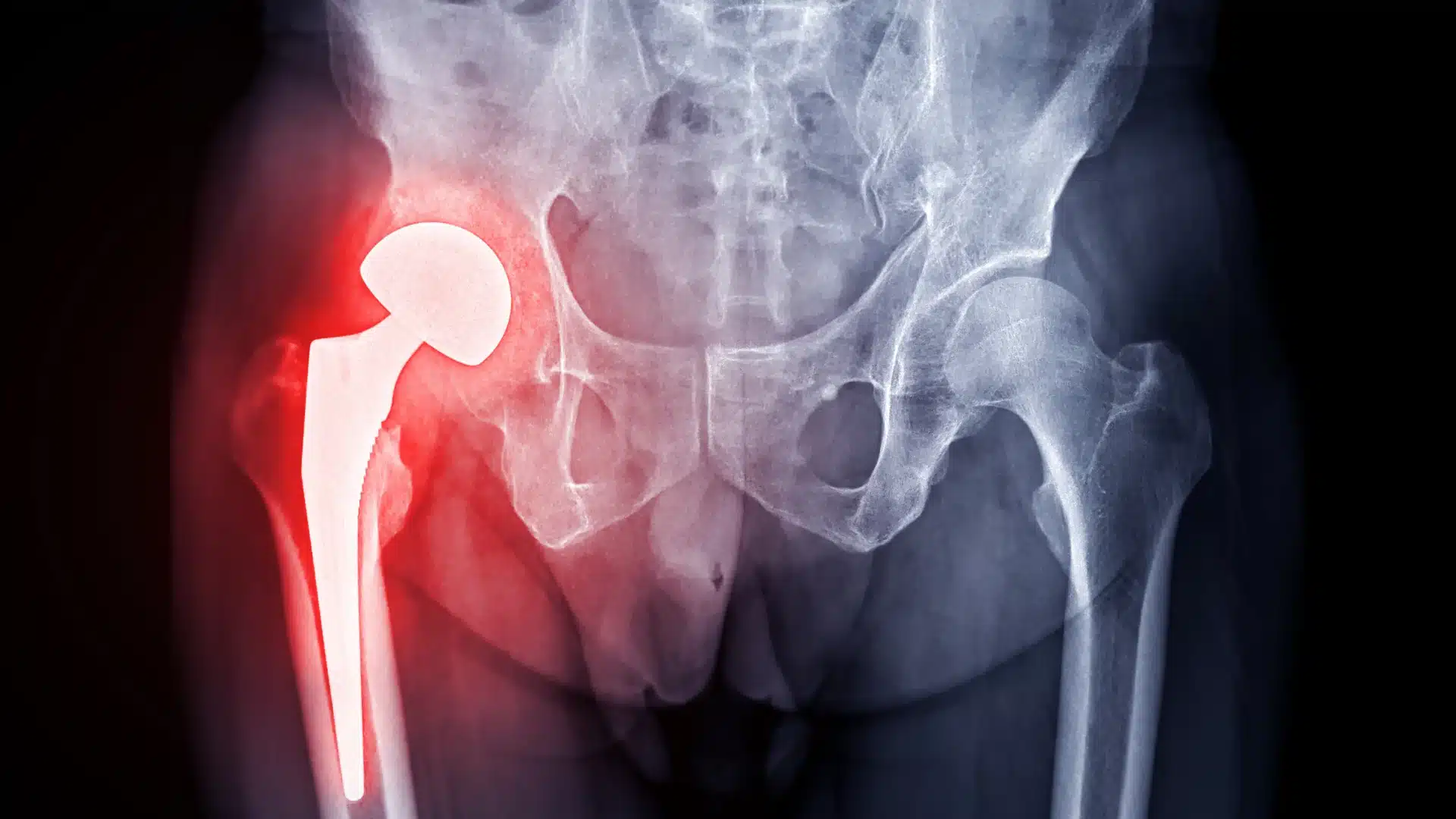Hip Replacement Surgery: Types, Process and Cost

Overview
Hip replacement surgery is a common surgical procedure used for millions of people worldwide suffering from chronic hip pain and limited mobility due to joint damage. It simply replaces the damaged or worn parts of the hip joint with artificial metallic components, allowing the patient to be pain-free.
Rapid technological advancements, such as robotic-assisted techniques and minimally invasive procedures, are making hip joint replacement surgery safer, quicker, and more effective than ever. Knowing the types, costs, and recovery process is crucial whether you are doing your research or for a loved one. This guide will cover everything, from procedure to costs and recovery post-surgery.
Hip Replacement/Arthroplasty
Also known as hip arthroplasty, it is a surgical intervention that involves replacing the diseased parts of the hip with artificial implants made of various materials, either metallic, ceramic, or plastic composition.
It is the one of the common surgical options for patients with severe arthritis, fractures, avascular necrosis or other conditions causing chronic pain and immobility. By restoring function and reducing discomfort, hip replacement allows them to perform their everyday activities and enjoy a better quality of life.
Types of Hip Replacement Surgery
1. Partial Hip Replacement
This is also referred to as hemiarthroplasty. It is a surgical procedure that only replaces the femoral head (the ball of the hip joint). It does not replace the whole socket. It is often used in older people with certain types of hip fractures.
The head of the femur is replaced by a ceramic or metal ball implant fixed on a metal stem. This procedure is not for patients with arthritis as arthritis often involves the socket as well and has to be replaced as well.
2. Total Hip Replacement
The total hip replacement procedure involves replacing the acetabulum (hip socket) and the femoral head with artificial components. It is recommended for those with advanced arthritis or severe joint damage.

3. Hip Resurfacing
Hip resurfacing is a process that replaces the natural joint surface by smoothening and capping the femoral head with a layer of metal. It can be recommended for younger, more active patients who would like to retain more of their natural bone.
4. Minimally Invasive Hip Replacement Surgery
This relatively new technique uses smaller incisions and less tissue damage. Patients recover faster, have less post-operative pain, and spend less time in the hospital.
5. Robotic-Assisted Hip Replacement Surgery
Advanced technology helps surgeons perform precise and accurate replacements in robotic-assisted procedures. Robotic hip replacement surgery helps to have a more precise alignment of the artificial implant in the body.
Each type has unique benefits and considerations, and choosing the right one depends on factors like age, activity level, and the severity of joint damage. You can avoid replacement using regenerative medicine by preserving your natural joint. Contact us for a free consultation.
Ideal Patients for Replacement
The suitability for hip replacement is for patients who are facing continuous pain along with mobility difficulties, which are unresponsive to the treatment or modifications in lifestyles and medications. Some criteria dictate suitability are:
Chronic Pain
Patients who experience severe hip pain that interferes with regular activities like walking and more. Sometimes, even resting may be a candidate for surgery.
Arthritis and Joint Damage
Situations like hip osteoarthritis and rheumatoid arthritis often result in joint deterioration, making surgery necessary.
Fractures and Injuries
Hip fractures or severe trauma to the joint may require surgical intervention, especially in elderly patients.
Based on an individual’s medical history and lifestyle, consulting with an orthopedic specialist is critical to evaluating whether hip replacement surgery is the best course of action.
Cost of Hip Replacement Surgery
The cost of hip replacement totally depends upon the location, hospital, surgeon, and type of implant used. Here’s a detailed breakdown:
Average Cost: ₹2,00,000–₹5,00,000
Roughly, here are the estimated costs from some cities:-
- Delhi: ₹2,50,000–₹4,50,000
- Bangalore: ₹2,40,000–₹4,30,000
- Mumbai: ₹3,00,000–₹5,00,000
- Hyderabad: ₹2,20,000–₹4,00,000
- Pune: ₹2,30,000–₹4,20,000
Being aware of these costs can help patients make informed decisions regarding their treatment options. Different hospitals and orthopedic specialists will provide different costs for the procedure.
Apart from this, after surgery, there may be associated costs of follow up visits, getting aid from a physiotherapist for recovering mobility and some associated lifestyle changes.
Surgical Process
Anesthesia
The procedure is performed under general anesthesia (the patient is fully unconscious) or spinal anesthesia (numbs the lower body).
Incision and Access
A specialist surgeon makes an incision over the hip joints to access the damaged bone and cartilage. In minimally invasive techniques, the incision is smaller, reducing tissue damage.
Removal of Damaged Parts
The damaged components of hip joints, including the femoral head and hip socket, are carefully removed during this process.
Placement of Prosthetic Device
Prosthetic joints are often made of metal, ceramic, or plastic and implanted in the body. They are designed to be like natural joints in movement and durability.
Alignment and Closing
The surgeon then ensures the implants fit well and restores the joint’s alignment before closing the incision with stitches or staples.
Hospital Stay and Recovery
As per the surgical procedure, if there were no complications, patients have to stay in the hospital for 3 to 5 days. They should make arrangements for support at home during recovery.
Recovery
Immediate Post-Surgery
Post-surgery, the patient’s health is closely monitored in a recovery room. Pain management begins immediately, with medications administered to reduce discomfort.
Almost every patient roughly have to be in the bed for about 3 to 5 days. During this period, physiotherapists help patients take their first steps with a walker or crutches. The initial weeks call for close monitoring and following doctor’s orders.
Typical Recovery Timeline
Week 1–2: Patients can usually perform light activities with assistance.
Week 3–6: Mobility improves, and many patients can walk without aid.
3 Months+: Most patients regain full mobility, but strenuous activities are avoided.
Permanent Restrictions: Patients are advised to avoid high-impact activities (like running or jumping) to prolong the lifespan of the artificial joint.

Physiotherapy and Lifestyle Changes
Strengthening the muscles of the hips, as well as improving movement of the joints, requires frequent physiotherapy. These therapy sessions help strengthen hip muscles and improve how well the joint moves.
To take care of the new hip in the long run, patients should keep a healthy weight (healthy BMI) to put less stress on the artificial joint and stay away from activities that could wear it out. When patients follow these steps, most of them find they can move better and feel less pain often getting back to enjoying life within a few months after their surgery.
Success Rate
It is a decent orthopedic procedure with a higher success rate and long-lasting results. Modern implants last for 15–20 years or more, depending on the patient’s lifestyle and activity. However, like any surgery, there are risks, including infection, blood clots, or implant dislocation.
Surgeons perform detailed evaluations before the surgery to minimize risks. Post-surgical care and advancements in implant materials have significantly improved outcomes.
Takeaways
Hip replacement surgery is a suitable procedure that may offer pain relief and increase mobility of the patient leading to improvement of quality of life. Depending on the age and condition of the patient, preserving the natural hip joint must be tried before going for replacement. You can take a free consultation from HipXpert to find the best treatment for you.
FAQs on Hip Replacement
Is it normal to have pain after a hip replacement?
Yes, experiencing some pain after a hip replacement is normal as part of the healing process. It typically decreases over time with proper pain management and physical therapy. Persistent or severe pain should be discussed with your physician.
Is a hip joint replacement safe and successful?
Hip joint replacement is generally considered safe and has a high success rate, improving mobility and reducing pain for most patients. But like any surgery, it carries potential risks, so it’s important to discuss these with your healthcare provider.
How long does surgery take for a hip replacement?
A typical hip replacement surgery usually takes between 1 to 2 hours, depending on the complexity of the procedure and the surgical technique used. Preparation and anesthesia time may extend the total time spent in the operating room.
Can I avoid hip replacement with therapy?
In some cases, physical therapy and other non-surgical treatments can help manage hip pain and improve function, potentially delaying the need for a hip replacement. However, the effectiveness depends on the severity of the joint damage and individual health factors.
What kind of activities can I do after hip replacement?
After recovery, most patients can return to a certain grade of physical activity such as walking, swimming, and cycling. High-impact activities like running or heavy lifting may need to be limited to protect the new joint. Always follow your surgeon’s recommendations for safe activities.
